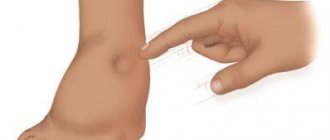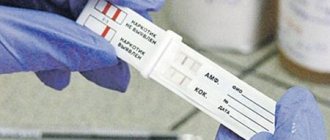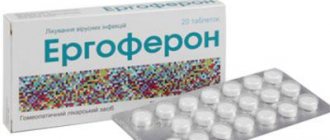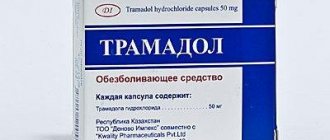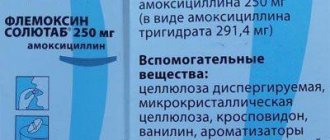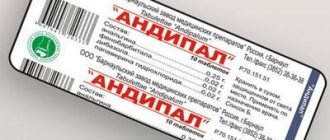Selenium is a trace element that is physiologically considered one of the most important trace elements in the human body. Just a few years ago, selenium was considered a poison. And indeed it is! It's all about the dose. If it is exceeded, poisoning may occur and the negative effect on the human body will increase, but if this trace element is not enough in the body, then the person can quickly grow old or become very ill.
Interesting! A large amount of selenium is found in Brazil nuts.
Scientists, after conducting numerous studies, have come to the conclusion that there should be much more of this substance in the male body than in the female body, since it affects the reproductive function of men. If representatives of the stronger sex experience a lack of this substance, sexual life in this case becomes impossible. It has also been repeatedly proven that sudden death in infant boys is associated precisely with a reduced level of selenium in the body. In this regard, scientists have come to the conclusion that the role of selenium in the body is colossal. Since a deficiency of this microelement can lead to irreversible consequences.
Mechanism of action of selenium
Selenium poisoning is rarely observed in clinical practice: according to epidemiological studies, more than 75% of Russians have a deficiency. This leads to multiple disruptions in the functioning of the body, since the importance of the mineral for it is difficult to underestimate.
Selenium has a wide range of effects on the human body:
- strengthening the immune system, increasing immunity to the effects of negative external and internal factors, improving human adaptation to adverse conditions;
- acceleration of biochemical reactions;
- normalization of the functioning of the endocrine glands, including the thyroid gland;
- prevention of deposition of cholesterol plaques on the walls of blood vessels;
- neutralization of heavy metal ions with their subsequent evacuation from the body;
- accelerating the regeneration of damaged liver cells - hepatocytes;
- prevention of the formation of benign and malignant neoplasms;
- stimulation of rapid growth of hair and nails, improvement of the condition of the dermis and epidermis;
- optimization of hormonal balance;
- improving the absorption of zinc, iodine, fat- and water-soluble vitamins.
The benefits of selenium lie not only in its adaptogenic, but also in its antioxidant effect. It prevents premature cell destruction by free radicals. And when damage is detected, it starts recovery processes.
Info! With a lack of selenium, spermatogenesis is especially affected. The qualitative and quantitative composition of sperm deteriorates. An insufficient number of sperm is detected in the ejaculate, which makes conception impossible.
The role of selenium in the human body: its deficiency and excess
Selenium is a chemical element, number 34 in the periodic table, designated by the symbol Se (lat. Selenium), necessary for the proper production of thyroid hormones and the functioning of the organ itself.
Deficiency of this element has also been shown to increase the risk of thyroid disease (including Hashimoto's disease, hypothyroidism and neutral inertia).
Selenium supplements are used when thyroid disease has already developed. Some studies show that it helps reduce the concentration of antibodies (characteristic of Hashimoto's disease).
Selenium affects the proper functioning of the immune system because it is involved in the formation of macrophages and lymphocytes. And its deficiency is increasingly associated with the occurrence of certain types of oncology, inflammatory or degenerative diseases.
Deficiency: symptoms
- Depression
- Eczema
- Premature aging of the body
- High likelihood of cancer
- Fatigue
- Muscle pain and weakness
- Deterioration of vision
- Disorders of the liver and pancreas
- Increased blood cholesterol levels
- Slow growth in children
- Hair loss
Indications for taking medications with selenium
An excess of selenium in the body can occur due to a person’s lack of awareness regarding the composition of medications taken. The microelement is found in many drugs and dietary supplements (dietary supplements), intended primarily to strengthen the immune system. Moreover, the absence of selenium in mineral-vitamin complexes indicates their insufficiently high quality.
Such drugs are prescribed by doctors to patients in the following situations:
- frequent development of respiratory or gastrointestinal infections;
- exacerbation of chronic diseases without any predetermining factors;
- decreased immune defense of the body in adults and children;
- slow recovery after illness;
- deterioration of mental and physical performance.
Preparations and dietary supplements with selenium are included in therapeutic regimens to increase the activity of the antioxidant system, reduce the level of “bad” cholesterol, and improve the functioning of the cardiovascular system.
Enjoy life and be active!
Online store
- Health and Beauty Directory
- Omega acids for facial skin: a beauty guide
- Insomnia: what is it and how to deal with it?
- How do AHA acids for the face work?
- The best facial cleansers
- How to get rid of dandruff? Nature's Recipes
- The best dietary supplements
- What are the benefits of propolis?
- Beautiful means healthy: products for cleansing the body
- Ways to strengthen immunity in winter
- Sources of protein: how to replenish protein in the body
- Autumn time - how to recharge your batteries!
- How to pause hot flashes and sweating?
- Retinal macular degeneration: causes and prevention of AMD
- How to relieve nervous tension
- Taking care of your joints: live in motion!
- New formula "Trigelm"
- How to avoid vascular accident?
- Life without allergies - effective prevention
- Beautiful smile: dental and oral care
- How to keep your liver healthy?
- The basics of beauty and youthfulness of your skin
- "Novomin": special action dietary supplement
- How to stay healthy as you age
- Vitamins and minerals – truth and myths
- Your way to a beautiful figure! Body Compliment Program
- Diabetes mellitus: relevant for everyone
- Life without pain in the muscles of the back and neck: a quick solution!
- Gut comfort in summer
- Facial skin types: beauty secrets
- Eye health in summer: talking about the main thing
- and healthy joints? How to make the most of your summer...
- Getting ready for summer: cleansing the body
- Omega acids are your source of healthy fats
- “Iron” health of men and women
- New Year's feast: how to protect your liver?
- How to prolong youth and deceive time?
- Breath of health this winter
- Autumn is the time to strengthen your immune system!
- Men's health: talking about the main things
- Parasitic infections – unpleasant consequences of summer
- Body oxidation: how to find balance?
- Skin damage in summer: care and methods of protection
- Spring allergies: what to do?
- Selenium deficiency - a new problem of the 21st century
- How not to oversleep spring?
- Warming Solution to Relieve Cold Symptoms
- A healthy liver is the key to excellent health
- Cleanliness of the body is the key to longevity
- Autumn blues: detect and eliminate
- Immunity is a reliable defender of our body
- Osteoarthrosis and osteochondrosis
- Iron is a “conductor” of health
- Bones and osteoporosis
- Allergies and chronic allergic diseases
- Antioxidants to protect the body
- Iron for women's health
- We fight anemia - keep the body in good shape!
- The invisible enemy of our heart
- Sweet life without sugar
- Healthy sleep, or peace of mind day and night
- Losing weight means getting healthier
- Winter, summer - which is better?
- Protection given by nature
- Metabolic syndrome - a threat of the 21st century
- STRONG IMMUNITY, or how to protect yourself from diseases
Company
- Welcome!
- About company
- Story
- Research and Innovation Center
- The science
- Ask for your health!
- News
- For suppliers
Business with us
- Business with the company
- Advantages
- Possibilities
- Our projects
- Success stories
- AUTOproject “SIBVALEO-TEAM”
- Housing program
- Register
Contraindications to taking selenium
Diagnosis of an excess of selenium, indicating an overdose, often occurs when a person has contraindications to it. Taking vitamin-mineral complexes is prohibited if you are intolerant to the ingredients . It should be taken into account that they contain more than 1-2 dozen different vitamins, macro- and microelements. Against the background of hypersensitivity to one of them, the likelihood of excessive penetration of selenium into the blood increases.
Important information! Pregnant and breastfeeding women require prior consultation with a doctor before undergoing treatment. Especially before taking dietary supplements, and not pharmacological drugs.
Microelement - for men
According to experts, men should have more of this substance than women, since it affects the activity of the male reproductive system and sexual energy.
If the amount of useful selenium in men is insufficient, sexual relations become impossible.
A number of researchers have repeatedly proven that the unexpected death of male infants is associated with a deficiency of this element.
A diet rich in useful microelements is the main source of guaranteed coverage of the body’s needs.
Herring contains selenium
Causes of overdose
An interesting fact is that the selenium content in the earth’s crust does not exceed 500 mg/t. Moreover, it does not contain it in its pure form, but in the form of chemical compounds with other elements. It is found in equally microscopic doses in the human body, where it is supplied with food. When studying the annotations for preparations containing selenium, it is easy to discover that this element is almost always in last place in terms of quantitative content in the list of minerals. This means that an overdose is impossible when taking neither dietary supplements nor pharmacological drugs.
However, cases of selenium poisoning have been reported from time to time. This can happen for the following reasons:
- upon contact with skin of toxic solutions with a high concentration of trace elements;
- when inhaling vapors saturated with selenium salts;
- when swallowing poisons or chemicals that contain the mineral.
Acute or chronic intoxication mainly affects workers in hazardous industries - oil refining, glass. People employed in the chemical industry are at risk of selenium poisoning due to poor quality treatment facilities.
Excess of domestic consumption
There are several forms of selenium that are absorbed by the body upon intake:
- Organic natural - from plants.
- Organic artificial – combined with artificial proteins (Selenium-active drug).
- Yeast is a dietary supplement obtained by the interaction of yeast with inorganic selenium.
- Mineral – inorganic, introduced into the body under the supervision of a doctor.
You can be poisoned by selenium-containing drugs if you do not follow the instructions for their use. If you take more than 10 daily norms of a microelement within 24 hours, a sharp deterioration in your health will occur. With prolonged intake of excess microelement into the body (5 mg/day), the condition of teeth, nails, hair, skin worsens, immunity decreases, and mental disorders are observed.
With a balanced diet, the human body is provided with 90% of the mineral without negative consequences. The exception is the Brazil nut. One hundred grams of the product contains 1915 mcg of microelement, so consuming more than 2 pieces of the product. within 24 hours can lead to poisoning.
Symptoms of selenium poisoning
Symptoms of selenium overdose are divided into nonspecific and specific. The latter include a metallic taste in the mouth and the smell of garlic emanating from the victim's skin. Other signs of chronic overdose resemble clinical manifestations of intoxication with other chemicals:
- shortness of breath, feeling of lack of air when inhaling;
- digestive disorders, including constant nausea;
- constipation or diarrhea;
- blood pressure surges during the day;
- migrating joint pain;
- psycho-emotional instability;
- visual disturbances, decreased visual acuity.
In case of chronic overdose, an allergy to selenium compounds may develop, manifested by urticaria . But in case of acute poisoning with selenium vapor, convulsions occur, the skin acquires a yellowish tint, and the heartbeat quickens. Coordination of movements is quickly disrupted, and then the victim loses consciousness.
When selenic acids come into contact with the skin, it is seriously damaged. Chemical burns form, ulcers and erosions occur.
History of selenium toxicity
Selenium toxicity in animals was detected by the occurrence of neurological and muscular symptoms in cattle during the 1930's. This was variously called alkali disease, or blind staggers, and is today thought to represent different stages of the same condition.
The clinical features of blind staggers include vision loss or impairment, random walking, poor feeding and paralysis. In alkali disease, there is loss of hair, deformed and sloughing hooves, joint erosion, anemia, and cardiovascular, hepatic and renal effects.
In animals, selenium toxicity has also been associated with abnormal fetal development in cattle, swine and sheep, but with infertility and a higher proportion of runt offspring and fetal deaths.
First aid for selenium overdose
Chronic overdose is usually discovered by chance when diagnosing other diseases or finding out the reasons for the constant deterioration of a person’s well-being. So first aid is only necessary for acute intoxication, which can occur in industrial enterprises.
The algorithm of actions is as follows:
- Call an ambulance, describing the cause and nature of the overdose.
- Inject intravenously or intramuscularly the antidote provided in hanging first aid kits.
- Carefully cut off and remove clothing soaked in chemical solutions from the victim.
- If breathing stops, perform resuscitation measures.
Do not rinse the stomach, as vomit may cause a burn to the esophagus. If the victim is conscious, you can give him any enterosorbent, for example, Enterosgel in suspension or activated carbon in tablets.
Ingestion of selenium
The long-term intake of excessive selenium may involve either organic or inorganic forms in food or water. The symptoms of chronic selenium toxicity or selenosis first appear as a garlicky odor in the breath, and a metallic taste in the mouth. This is followed by gastrointestinal symptoms such as nausea or diarrhea, tiredness and irritability, and joint pain, in more than 70-75% of patients.
Other characteristic features include loss of mentation, paresthesia, hyperreflexia, nail changes resulting in brittleness, deformation and loss of nails, alopecia, discoloration and loss of teeth, and skin rashes. These are seen in more than 60-65% of patients.
Treatment for selenium intoxication
It is possible to remove the trace element selenium from the body only in a hospital setting.
The arriving ambulance team intravenously injects solutions of diphenhydramine and sodium thiosulfate into the victim. In case of vapor poisoning, wash the eyes and throat with a 2% soda solution. Intramuscular injection of 25% magnesia accelerates the evacuation of a dangerous toxic substance with each bowel and bladder emptying. And intramuscular administration of thiamine (vitamin B1) eliminates muscle cramps and restores innervation. After the patient is hospitalized, treatment continues in the hospital . To quickly remove selenium from the body, diuretics are used, and in severe cases, hemodialysis or plasmapheresis. Excess selenium is eliminated within 2-5 days, and then the rehabilitation period begins.
Causes of selenosis
Causes of selenosis range from ingestion of excessive selenium, as in the case of regular snacking on Brazil nuts which could contain up to 90 mcg of selenium per nut. There are also many other plants which have the capability to concentrate selenium that is taken up from the soil, and they are termed selenium accumulators.
In contrast to the normal plant's selenium content of 10 ppm, even when they grow on selenium-rich soil, selenium accumulators may have concentrations in thousands of ppm. Astragalus racemosus
was reported to have a concentration of almost 15,000 ppm of selenium.
These plants are able to grow only on seleniferous soils, and are called primary selenium indicators. While found largely in North America, some species do grow in Australia. Other selenium accumulators also exist, which can grow on selenium-poor soils, and these are secondary soil accumulators.
Reviews
Victoria, 54 years old, Active Selenium was prescribed to me by my therapist when tests revealed an increased amount of cholesterol. What’s surprising is that after a month’s use, not only did these indicators normalize, but the blood pressure stopped rising and performance increased. The doctor recommended repeating the course in six months. Christina, 26 years old I envied my friend - in a short time her hair became very good, healthy and shiny. She shared the secret that she drinks Selenium-Active dietary supplement. It turned out that it is sold in pharmacies and the price is quite affordable. The package is designed for a month, I started taking it and noticed the effect - my nails stopped breaking and my hair stopped splitting. Alexandra, 42 years old Something bad happened to me. Breast cancer was discovered, surgery was performed, and chemotherapy was prescribed. My roommate advised me to buy selenium active and said that the procedure was much better tolerated this way. The attending physician confirmed that the drug alleviates the condition during chemotherapy. Today I’m fine, I’m grateful to my neighbor for the advice. Attention! The information presented in the article is for informational purposes only. The materials in the article do not encourage self-treatment. Only a qualified doctor can make a diagnosis and give treatment recommendations based on the individual characteristics of a particular patient. Found an error in the text? Select it, press Ctrl + Enter and we will fix everything! Did you like the article? Advertising on the website
Toxic levels of selenium
Some agencies have put forward a chronic reference exposure level of 0.02 mg/m3 for selenium and its compounds, and of 0.00008 mg/m3 for hydrogen selenide, based on findings in humans with selenosis and guinea pigs with selenium inhalation toxicity.
Selenium is an amphoteric element with predominant nonmetallic properties. Selenium compounds have pronounced biological activity and are widely used in industry and agriculture. Under natural conditions, acute selenium poisoning is not observed, since its content in feed rarely exceeds permissible standards. Poisoning occurs as a result of its overdose when treating animals and adding it to feed as a prophylactic for their white muscle disease, toxic liver dystrophy in piglets, calves and chickens. Selenium compounds (sodium selenite, sodium selenate) are highly toxic substances. A dose of 0.001 g/kg of animal weight is toxic. Horses are the most sensitive. The degree of toxicity of a selenium compound depends on its background level in the soil. The lethal dose of sodium selenite when administered subcutaneously and intramuscularly is considered (mg/kg): for horses 2-3, for sheep 3.5-5, for piglets 3, for cattle 9-10, for adult pigs 10-15. Selenites are more toxic than selenates, so the LD50 of sodium selenite for rats after oral and intraperitoneal administration is 7 mg/kg, sodium selenate is 13.8 mg/kg. Selenium compounds accumulate in plants of many families, in particular legumes. Plants that accumulate selenium emit an unpleasant odor, and animals eat them only during hungry times or in the form of a herbal mixture. In such plants, selenium can accumulate up to 100 mg/kg or more. Selenium concentrations in feed exceeding 5 mg/kg can cause poisoning. Causes of poisoning. Eating plants with selenium content that exceeds the norm. Overdose of selenium-containing drugs. Toxicodynamics. The mechanism of the toxic effect of selenium is associated with a violation of sulfur metabolism in the body and the resulting functional abnormalities. The replacement of sulfhydryl groups with selenhydryl groups in a number of enzymes leads to inhibition of cellular respiration and a decrease in dehydrogenase activity, and disruption of protein synthesis. When selenites interact with the SN groups of cysteine and coenzyme A, stable selenotrisulfide complexes are formed, which block the Krebs cycle. Selenites, as active antioxidants, reduce the activity of glutathione peroxidase and block glutathione metabolism. Replacement of SS bonds with selenotrisulfide complexes leads to changes in the tertiary structure of proteins and disrupts their function. As a result of primary disorders at the molecular level, dysfunction of cells occurs, and then the organs and tissues that contain these cells. This in turn causes symptoms of selenosis. Clinical signs. Poisoning can occur acutely, subacutely and chronically. Acute and subacute poisoning develops with an overdose of selenium-containing drugs. Manifested by ataxia, anorexia; dyspnea, abdominal pain (teeth grinding), cyanosis of visible mucous membranes and sometimes skin are noted. Tachycardia is noted. Sweating increases. Body temperature decreases. Garlic smell of exhaled air and the same smell of skin. In ruminants, hypotension and atony of the proventriculus are noted. Pigs, dogs and cats have vomiting and pulmonary edema. Death occurs from respiratory arrest. In case of chronic toxicosis, changes in the coat are noted: loss of the tail tuft (bumpy tail), sparse mane, alopecia, coarse coat. Inflammation and deformation of the hoof, lameness. In birds, feather loss. Keratitis, conjunctivitis. Slowing down the growth and development of animals, reducing weight gain and productivity. Yellowness of the mucous membranes and skin is noted. Pathological changes. Cyanosis of mucous membranes and skin. Dystrophy of the liver, kidneys and myocardium. Petechial hemorrhages and ecchymosis of the epicardium and endocardium. Congestive hyperemia of the abdominal organs. There is an accumulation of fluid in the abdominal and chest cavity. There is dark red, uncoagulated blood in the blood vessels. Pulmonary edema. Diagnostics. Comprehensive. The concentration of selenium in the blood and liver is more than 0.002 g/kg, in the hoof horn and wool 0.005 g/kg indicates selenosis. Treatment. There are no specific antidotes. If poison is ingested orally: rinse the stomach or proventriculus, prescribe activated charcoal, saline laxatives, astringents and enveloping agents. Sodium arsenite 0.01 g/kg (once) in an aqueous solution is given internally. Inject sodium thiosulfate intravenously. To normalize liver function, glutamic acid, Essentialle, vitamins B1 and B6 are prescribed, and a glucose solution is administered intravenously. Analgesics, antihistamines and vitamin E as an antioxidant are prescribed. For chronic toxicosis, sulfur is prescribed orally. Unithiol, dicaptol and EDTA are not used: the chelate complex is more toxic than the metal itself. Ascorbic acid is not prescribed. VSE. In case of forced slaughter of animals, bacteriological and organoleptic studies are carried out. If a negative bacteriological test result is obtained, the internal organs are sent for technical disposal, the carcass is used for sorting into meat from healthy animals, and boiled sausages or canned food are prepared from the minced meat. Prevention. Follow the rules for storing and using selenium-containing drugs. Increase the amount of protein and sulfur in the diet to prevent selenium accumulation. Monitoring the background level of selenium in soil, water, feed. MPC in drinking water is 0.03 mg/l.
Selenium is an amphoteric element with predominant nonmetallic properties. Selenium compounds have pronounced biological activity and are widely used in industry and agriculture. Under natural conditions, acute selenium poisoning is not observed, since its content in feed rarely exceeds permissible standards. Poisoning occurs as a result of its overdose when treating animals and adding it to feed as a prophylactic for their white muscle disease, toxic liver dystrophy in piglets, calves and chickens. Selenium compounds (sodium selenite, sodium selenate) are highly toxic substances. A dose of 0.001 g/kg of animal weight is toxic. Horses are the most sensitive. The degree of toxicity of a selenium compound depends on its background level in the soil. LD50 of sodium selenite for subcutaneous and intramuscular administration (mg/kg): for horses 2.0-3.0; sheep 3.5-5.0; piglets 3.0; KRS 9.0-10.0; for adult pigs 10.0-15.0. Selenites are more toxic than selenates, so the LD50 of sodium selenite for rats after oral and intraperitoneal administration is 7 mg/kg, sodium selenate is 13.8 mg/kg. Selenium compounds accumulate in plants of many families, in particular legumes. Plants that accumulate selenium emit an unpleasant odor, and animals eat them only during hungry times or in the form of a herbal mixture. In such plants, selenium can accumulate up to 100 mg/kg or more. Selenium concentrations in feed exceeding 5 mg/kg can cause poisoning.
Causes of poisoning.
Eating plants with selenium content that exceeds the norm. Overdose of selenium-containing drugs.
Toxicodynamics.
Selenium disrupts the metabolism of sulfur in the body. The replacement of sulfhydryl groups with selenhydryl groups in a number of enzymes leads to inhibition of cellular respiration and a decrease in the activity of dehydrogenases and disruption of protein synthesis. When selenites interact with the SN groups of cysteine and coenzyme A, stable selenotrisulfide complexes are formed, which block the Krebs cycle. By exhibiting an antioxidant effect, they reduce the activity of glutathione peroxidase and block glutathione metabolism. Replacement of SS bonds with selenotrisulfide complexes leads to changes in the tertiary structure of proteins and disrupts their function. As a result of primary disorders at the molecular level, dysfunction of cells occurs, and then the organs and tissues that contain these cells. This in turn leads to selenosis.
Clinical signs.
Poisoning can occur acutely, subacutely and chronically. Acute and subacute poisoning develops with an overdose of selenium-containing drugs. Manifested by ataxia, anorexia; There is dyspnea, abdominal pain (teeth grinding), cyanosis of visible mucous membranes and sometimes the skin, tachycardia, sweating increases, body temperature decreases. The exhaled air smells of garlic and the same smell of skin. In ruminants, there is hypotension and atony of the proventriculus. In pigs, dogs and cats - vomiting, pulmonary edema. Death occurs from respiratory arrest. Chronic toxicosis is characterized by changes in the coat: loss of the tail brush (bumpy tail), sparse mane, alopecia, coarse coat. Keratitis, conjunctivitis. Inflammation and deformation of the hoof, lameness. In birds, feather loss. The growth and development of animals slows down, weight gain and productivity decrease. Yellowness of the mucous membranes and skin is noted.
Pathological changes.
Cyanosis of mucous membranes and skin. Dystrophy of the liver, kidneys and myocardium. Petechial hemorrhages and ecchymosis of the epicardium and endocardium. Congestive hyperemia of the abdominal organs. There is an accumulation of fluid in the abdominal and chest cavity. There is dark red, uncoagulated blood in the blood vessels. Pulmonary edema.
Diagnostics.
Comprehensive. The concentration of selenium in the blood and liver is more than 0.002 g/kg, in the hoof horn and wool 0.005 g/kg indicates selenosis.
Treatment.
There are no specific antidotes.
If poison is ingested orally: rinse the stomach or forestomach, prescribe activated charcoal, saline laxatives, astringents and enveloping agents. Sodium arsenite 0.01 g/kg (once) in an aqueous solution is given internally. Intravenously - sodium thiosulfate. To normalize liver function, glutamic acid, Essentialle, vitamins B1 and B6 are prescribed, and glucose solution is administered intravenously. Analgesics, antihistamines and vitamin E as an antioxidant are prescribed. For chronic toxicosis, sulfur is prescribed orally. Unithiol, dicaptol and EDTA are not used: the chelate complex is more toxic than the metal itself.
Ascorbic acid is not prescribed. VSE.
In case of forced slaughter of animals, bacteriological and organoleptic studies are carried out. If a negative bacteriological test result is obtained, the internal organs are sent for technical disposal, the carcass is used for sorting into meat from healthy animals, and boiled sausages or canned food are prepared from the minced meat.
Prevention.
Follow the rules for storing and using selenium-containing drugs. Increase the amount of protein and sulfur in the diet to prevent selenium accumulation. Monitoring the background level of selenium in soil, water, feed. MPC in drinking water is 0.03 mg/l.
Taking vitamins or dietary supplements can cause an overdose of selenium, which has characteristic symptoms, and knowing how to remove the element from the body in case of poisoning, you can promptly and competently provide first aid.
Who is at risk
In addition to living in an unfavorable area, the risks of selenium deficiency increase with accompanying factors:
- renal failure and dialysis;
- indigestion (Crohn's disease);
- HIV positive status.
All of these can affect the absorption of selenium, even if there is enough in the diet.
Adequate micronutrient levels are also important for people with underlying health conditions:
- Thyroid dysfunction (Graves disease, autoimmune thyroiditis, etc.);
- nodular goiter (thyroid nodules);
- oncological diseases;
- immune system diseases;
- pregnancy.
Toxic selenium compounds
The most toxic compound of selenium following inhalation is hydrogen selenide. Other toxic compounds are selenium dioxide, sodium selenite and selenium sulfide. Sodium selenite is the most toxic compound on oral ingestion.
Selenium sulfide has been linked with the occurrence of liver and lung tumors in mice and rats following oral exposure, and is a Group B2 carcinogen as per EPA classification. Elemental selenium has low toxicity following oral administration.
EPA has classified elemental selenium as a Group D, not classifiable as to human carcinogenicity, and selenium sulfide as a Group B2, probable human carcinogen.
